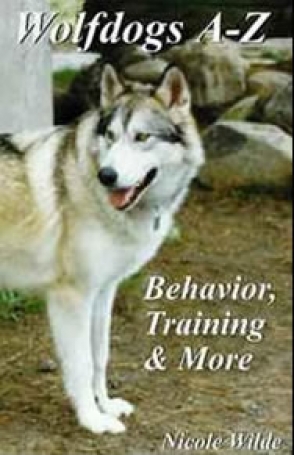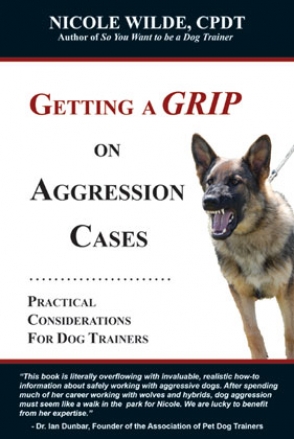Imagine a gentle, non-invasive healing method that can address pain, injury, and illness; speed recovery after surgery; and have remarkable effects on fear, anxiety, aggression, depression, and trauma. Energy healing can do all this and more!
Behavior Issues: The Role of Time and Trust
Dog trainers analyze behavior issues and design behavior modification protocols to help clients treat those issues. But allow me to take off my dog trainer’s hat for a moment and offer an owner’s point of view.
Sequoia, a six-year-old female Samoyed-wolf mix (fairly low content), came to live with us over ten years ago. She spent her days in a large outdoor enclosure with “the boys,” a pure wolf named Phantom, and a high-content wolf-Malamute mix named Heyoka. Although she has since passed on, Sequoia had an enjoyable life here. But she also had something else—a serious inclination toward resource guarding. I don’t mean from the boys—they knew enough to stay away when she had something valuable. Sequoia guarded from people. I made that discovery one day early on when I had given each fur-kid in the enclosure their own marrow bone. With everyone happily chewing away, I made my poop-scooping rounds. When I got close to where Sequoia was lying, she kindly demonstrated that infamous National Geographic snarl. I kept my distance and kept doing what I was doing, taking care not to infringe on her space.
I didn’t run upstairs and design a formal behavior modification protocol. Instead, over time, during my daily visits I began to move gradually closer to Sequoia when she was in possession of something she valued. (At other times, getting close was not a problem. In fact, she was a large, cuddly attention sponge!) I never attempted to take anything away from her just to prove I could; that would have been foolish and possibly dangerous, and might have created a serious lack of trust. Bit by bit, over the course of a few months, Sequoia realized I wasn’t going to try to steal her valuables. I was soon able to sit next to her while she happily chewed away, and eventually to stroke and pet her as well, without a trace of concern on her part or mine.
I never gave much thought to the way Sequoia and I worked out the resource guarding issue. (Of course, it could be argued that it was actually a behavior modification protocol of gradual desensitization, albeit a very loosely structured one.) But it made me consider the way so many problems can be resolved with that old dependable pairing of time and trust. For example, it’s not unusal for a dog who is adopted into a home to be afraid of one family member—usually the husband. Feeling badly that the dog doesn’t seem to like him, the man tries to befriend the dog. Unfortunately, those attempts frighten the dog further and make things even worse. When a dog is allowed to become comfortable with a new family and environment at his own pace, things tend to improve. Of course, there are situations where a dog never gets used to a particular person, but in most cases, those types of scenarios do get better over time as the dog learns to trust and relationships are built.
Behavior modification can be extremely effective, and has its place—a vastly important one—in treating behavior issues. And of course a strict protocol should be implemented when necessary. But as dog trainers know, the majority of problems have their roots in the dog-owner relationship. In the end, much of it boils down to building trust--dogs must learn that humans are trustworthy leaders to be respected, not feared. Humans must be patient enough to allow dogs to come around in their own time, and be kind and consistent enough to earn their trust. The rest is icing on the cake.










